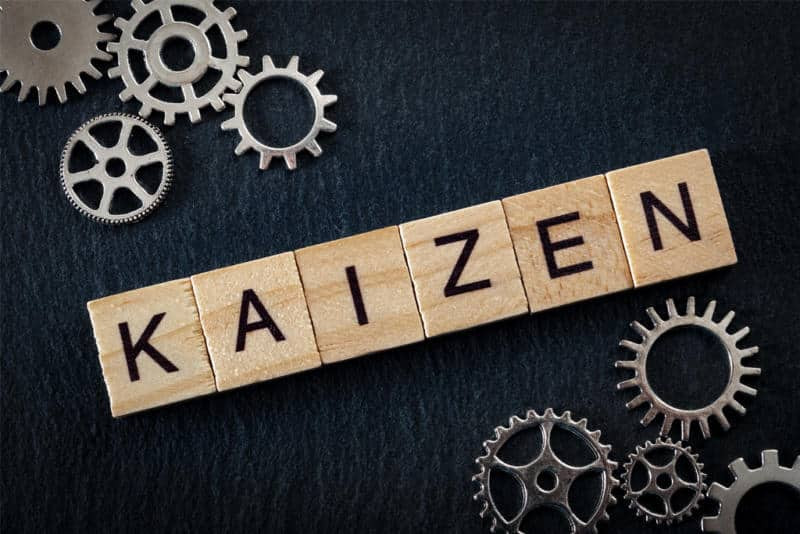
KAIZEN is a Japanese business philosophy that focuses on gradually improving productivity, and making the work environment more efficient. Kaizen supports change from within. The late Masaaki Imai, a Japanese organisational theorist and management consultant, first introduced the term to the Western world in his book titled Kaizen: The Key to Japan's Competitive Success.
The term Kaizen stems from two Japanese Kanji symbols. Kai meaning change and zen meaning good. Therefore simply defined, Kaizen means continuous improvement or to change for the better. At its core, the philosophy of Kaizen promotes continuous improvement, as small continuous improvements can compound to major benefits. Although primarily a business philosophy, Kaizen is applicable at a personal level. In this article, we shall discuss how to incorporate Kaizen into your day-to-day life.
Continuous improvement
Continuous improvement is the dedication to making minor changes and improvements daily. Initially these changes may seem irrelevant, but over time, they compound to major benefits. When the topic of self-improvement is discussed, most think of taking big leaps and making radical changes. In theory, this works, but for most it results in burnout, frustration and failure. Alternatively, by focusing on making slightly better decisions daily we can avoid burnout. If you were to improve by 1% each day, by the end of the year you will be 37 times better than before you started. In other words, small gains compound over time.
Comparison is your enemy
No two people have the same fingerprint, not even identical twins. No two people are exactly alike, even if they go through the same experiences. As humans, we have unique experiences, beliefs and attitudes. These combined make up our perspective, which shapes our worldview.
Progressive overload
Progressive overload is a term used frequently in fitness circles. It is a method of strength training in which there is a gradual increase of stress placed upon the musculoskeletal system and the nervous system. The principle suggests continual increase in total workload during training sessions will stimulate overall muscle growth and cultivate resilience. When we gradually increase our productivity, we overcome limitations and avoid burning out.
- Letter from America: Will Smith makes us all look like we are barbarians
- Hebrew scriptures: Will Smith’s smack heard around the world
- Letter from America: Will Smith makes us all look like we are barbarians
- Hebrew scriptures: Will Smith’s smack heard around the world
Keep Reading
Embrace the process
An important part of growth is learning. No one man can know everything. One should be open to the idea of learning, and sometimes-unlearning belief systems and ideas that do not work.
Dream big
“All men dream; but not equally. Those who dream by night in the dusty recesses of their minds wake in the day to find that it was vanity; but the dreamers of the day are dangerous men. That they may act their dreams with open eyes to make it possible,” said the late British archeologist Thomas Edward Lawrence. A man can only ever achieve that which he believes is possible. As one moves forward, one should always have big dreams and goals.
Be open to the idea of failing
The fear of failure has killed more dreams than failure itself has. Failure is less intimidating when viewed as part of the learning process rather than as a result. When we fail, we gain knowledge, as they say experience is the best teacher. This helps us to weed out routes that lead to dead ends. We can also learn from the failures of those who have come before us. Most successful people have written books on how they have achieved their success. In the words of Denzel Washington, it is important for us to “fail forward”.
As we embrace Kaizen, we can use the seven W questions as an aide in defining our goals as well as in their analysis. The questions are as follows:
- What has to be done?
- Who does it?
- Why to do it?
- How it is done?
- When in is done?
- Where should it be done?
- Why is it not done differently?
In conclusion, Kaizen is a daily process; it goes beyond simple productivity improvement. When done correctly it can yield great results as well as gradually eliminate wasted time through the process of continuous trial and error.










